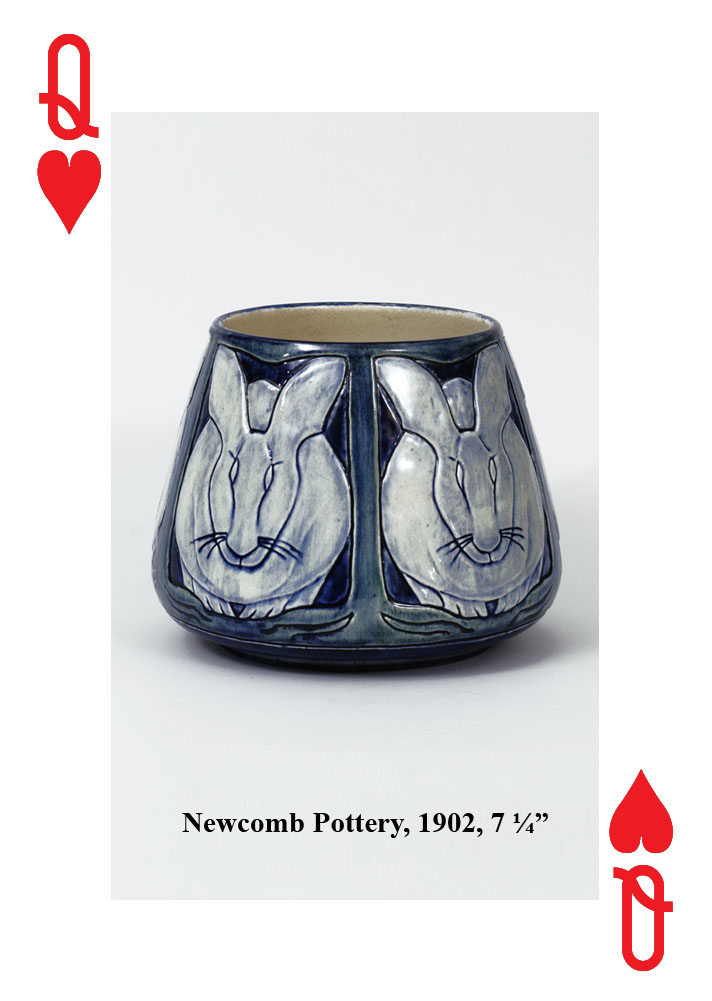Newsletter
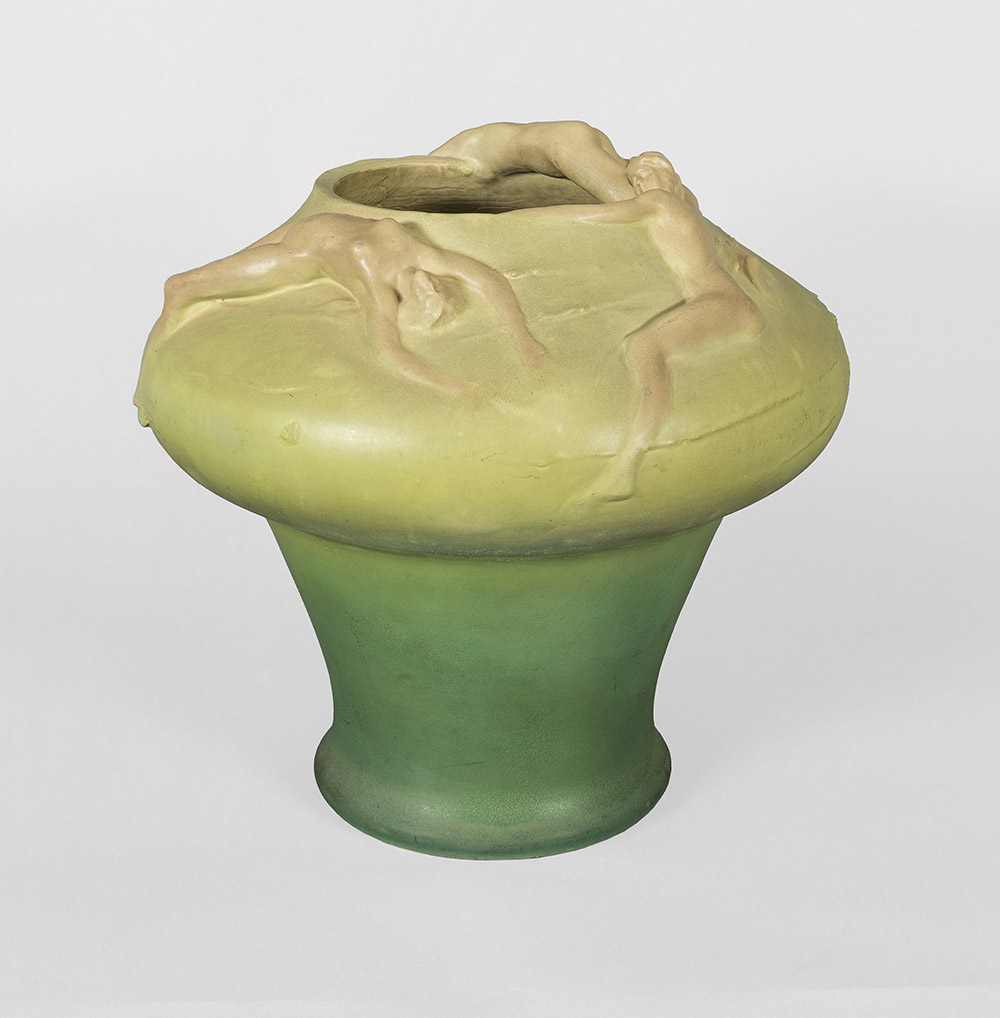
ONE OF A KIND Monumental vase designed and modeled by Anna Valentien, glazed earthenware, 16 ¾ in. high, c. 1911.
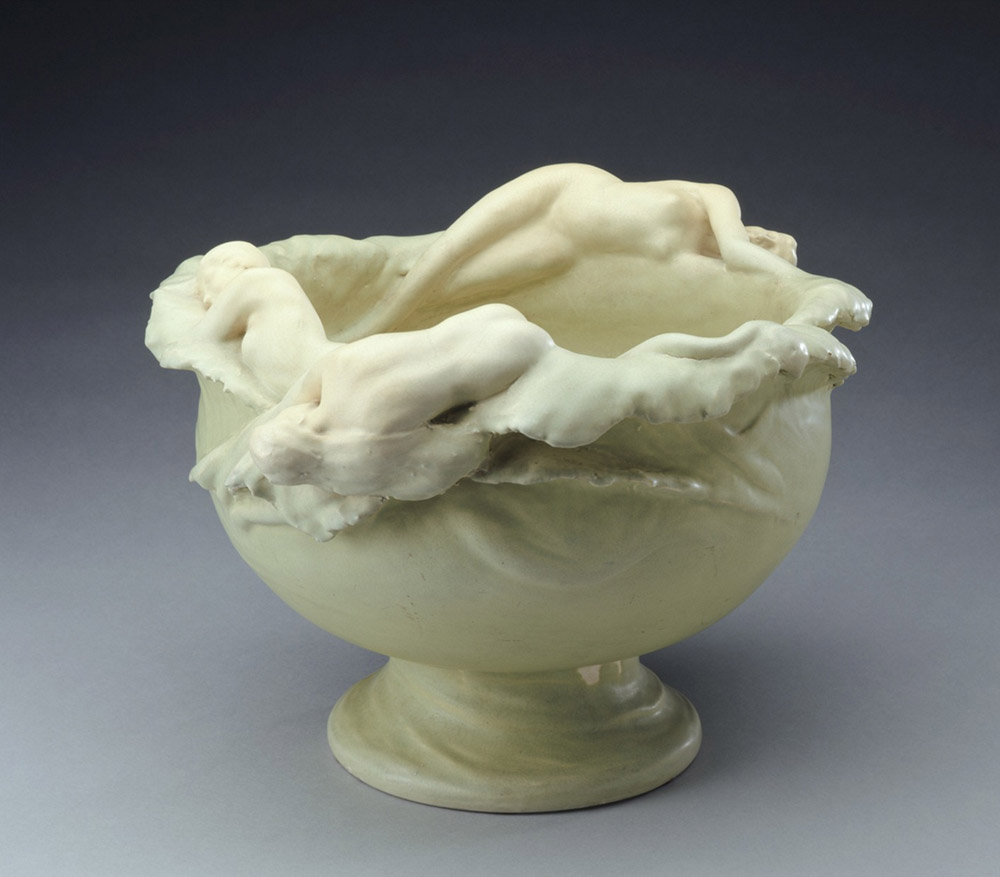
Punch bowl, 1900, Anna Marie Valentien for Rookwood Pottery Company, earthenware, Cincinnati Art Museum.
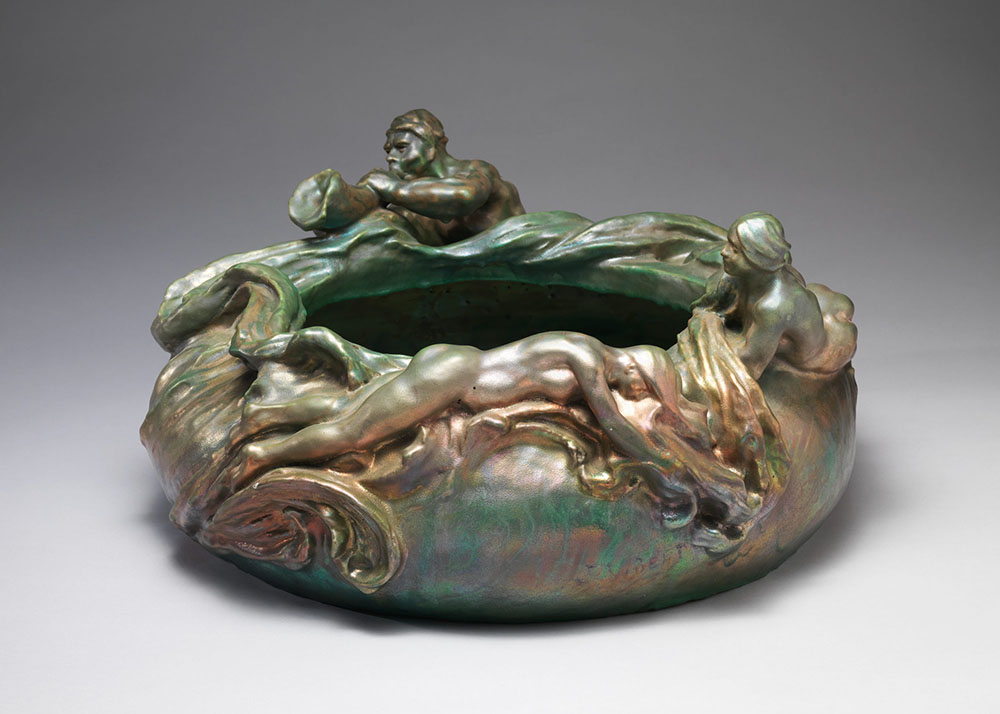
Sculptural bowl, 1900, Clément Massier, designer, James Vibert, maker, stoneware, Metropolitan Museum of Art.
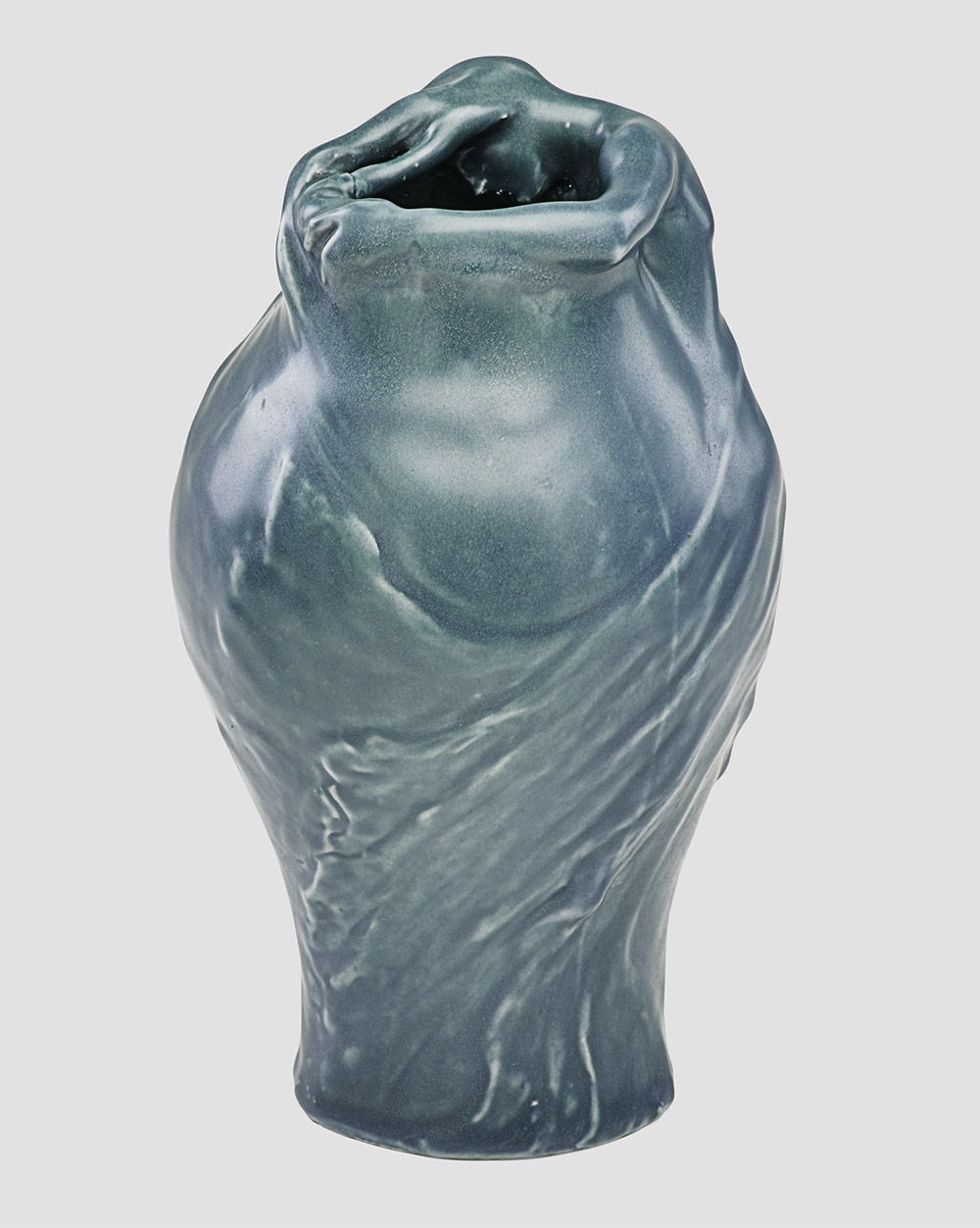
Van Briggle’s earliest known Lorelei vases were produced around 1898, shortly before his departure from Rookwood Pottery
After moving to California in 1908, former Rookwood Pottery employees Albert Valentien and his wife Anna Marie established the Valentien Pottery Company of San Diego, constructing its studio in 1911 from designs by architect Irving Gill (1870-1936). Until it abruptly closed about two years later, they sporadically produced a series of art pottery designs mostly decorated with stylized Art Nouveau imagery of conventionalized flowers and insects in relief. Among those works, this massive, mushroom-form vase with its three siren-like figures upon its shoulder reflects a continuing thread of influence from progressive continental, notably French, art upon Anna’s efforts as a sculptor and potter.
While molded nude mermaid figures were an unusual decorative scheme for American art pottery of the period, in the late 1890s Anna and Albert, along with their colleague Artus Van Briggle (1869-1904), introduced such languid, high relief figures in their vase designs for Cincinnati’s famed Rookwood Pottery. Works such as Van Briggle’s Lorelei and the Valentiens’ own vases, notably a punch bowl with three aquatic sirens designed by Anna illustrated their familiarity with the characteristic imagery of Art Nouveau design and referenced their own studies of European sculpture and ceramics. Additionally, the matte or "dead" finishes French ceramicists including Edmond Lachenal, Ernest Chaplet and Auguste Delaherche revisited from their use in historic Chinese wares undoubtedly prompted Rookwood to be reengaged with their own matte glaze experimentations that would soon provide for a new aesthetic in their body of work, particularly that of both Van Briggle and the Valentiens. Along with efforts by Boston potter William H. Grueby (1867-1925), such surfaces would serve to both prompt and further the rapidly growing fashion for such "dull" glazes in American Arts and Crafts pottery at the turn of the twentieth century.
Albert had traveled to Europe in 1894 to study ceramics as the head of Rookwood’s decorating department, but Anna joined him during his subsequent trip to Paris in 1899 in preparation for the Paris Exposition Universelle of the following year. Even before her arrival, her exposure to modern European art through prior studies, contemporary publications, and colleagues had undoubtedly prompted her interests toward a new approach to depicting the human body as sculptural elements, cast adrift upon the surfaces of vases and bowls. However, during her stay in Paris she furthered her studies in sculpture by joining classes at the Académie Colarossi and, briefly, became a student at the institute organized by Auguste Rodin, Antoine-Émile Bourdelle, and Jules Desbois.
The work of leading French ceramicists such as Clément Massier, who also produced vessels with figural and aquatic motifs, likely provided a further influence upon Anna’s work. Already in 1901 one writer lauded her use of a nude female form upon the rim of a small matte-glazed bowl, "as though floating in water, with hair streaming out on the waves" emphasizing it was "deserving of particular mention on account of its highly artistic conception and beautiful execution."
Even as such motifs remained rare within the body of American art pottery, the impact of both the Paris Exposition and her studies would prove lasting in her revisiting the siren theme for this vessel following the establishment of their short-lived California studio.
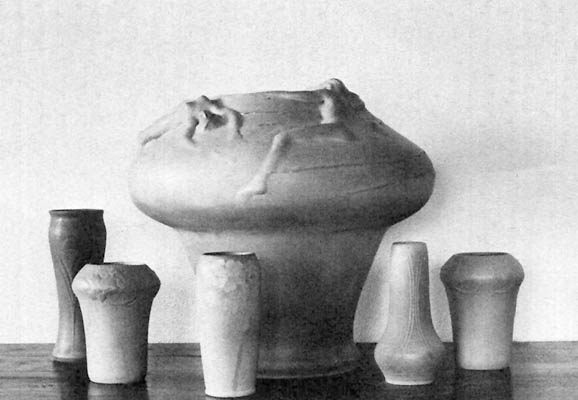
The actual vase designed and modeled by Anna Valentien. This vintage photograph shows the monumental vase, now in the collection of the Two Red Roses Foundation, surrounded by five other vases.
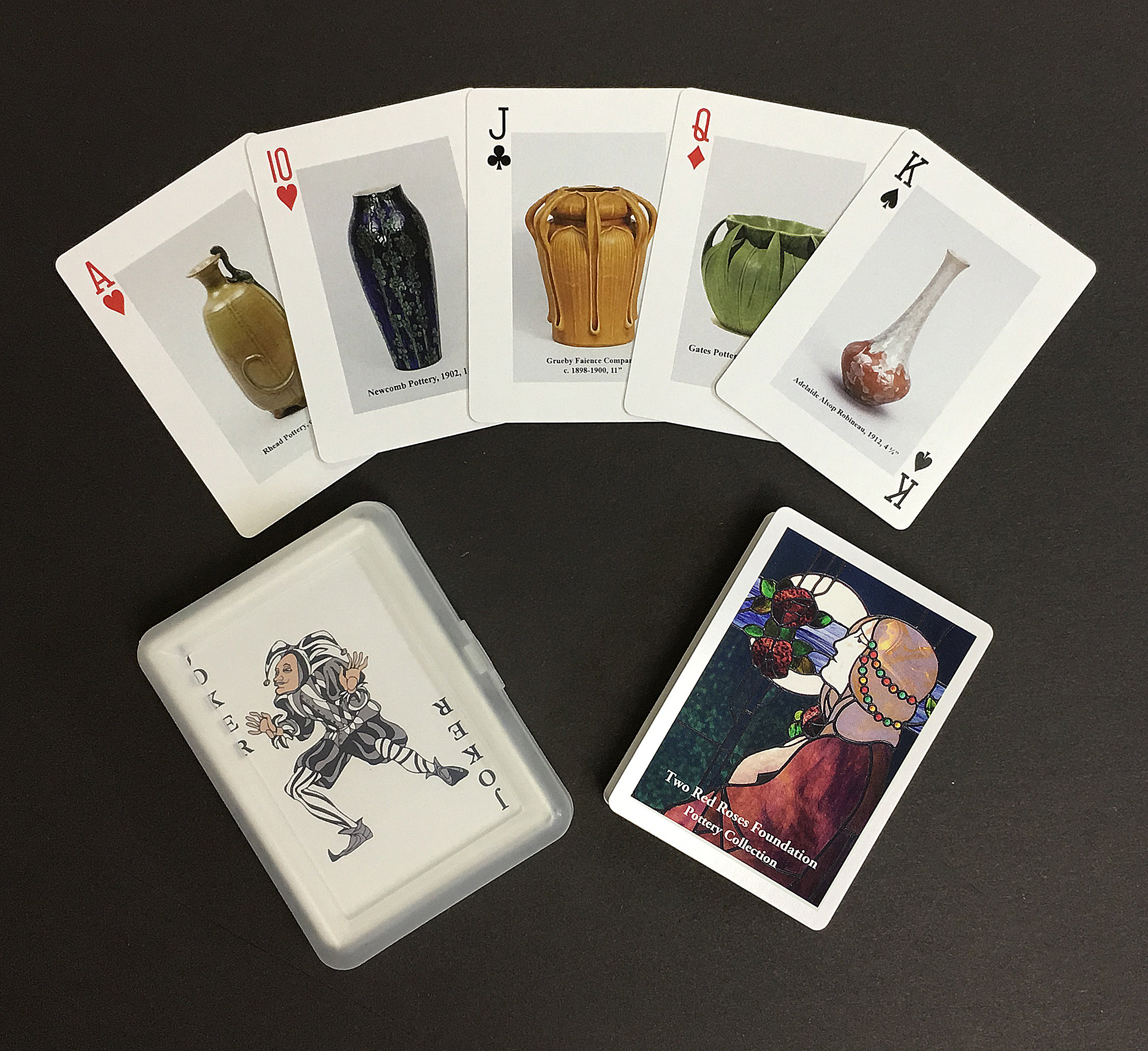
This is the first in the Playing Cards Portfolio featuring rare pottery followed by future decks focusing on furniture, metalwork, lighting, photography, and woodblocks.
America’s love for card games goes back hundreds of years. From Bridge to Poker to Solitaire, card games are still an immensely popular form of entertainment among diverse groups of all ages. The TRRF thought it would be a fun and informative project to create a standard deck of 54 playing cards including two Jokers that would include, on the face of each card, an image of an Arts and Crafts object from the Two Red Roses Foundation’s collection. Beautifully illustrated and captioned, this deck of cards is a unique and entertaining way to visually improve one’s knowledge and appreciation for the genre. A perfect gift for Arts and Crafts lovers.
AVAILABLE ON OUR WEBSITE
$10.00
FREE SHIPPING
